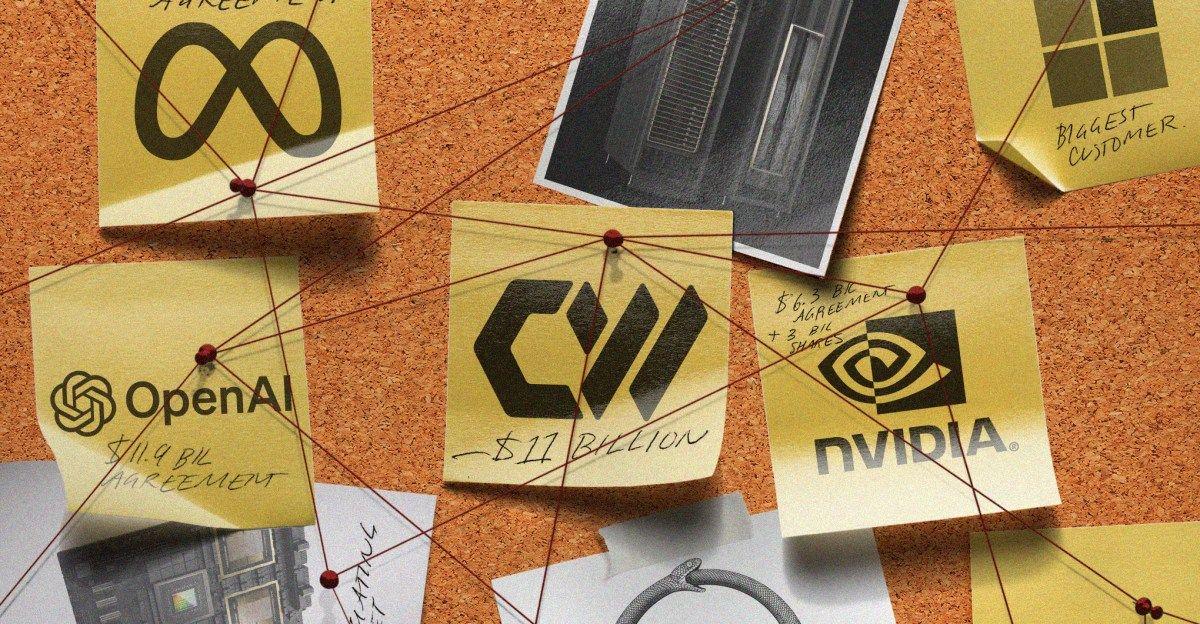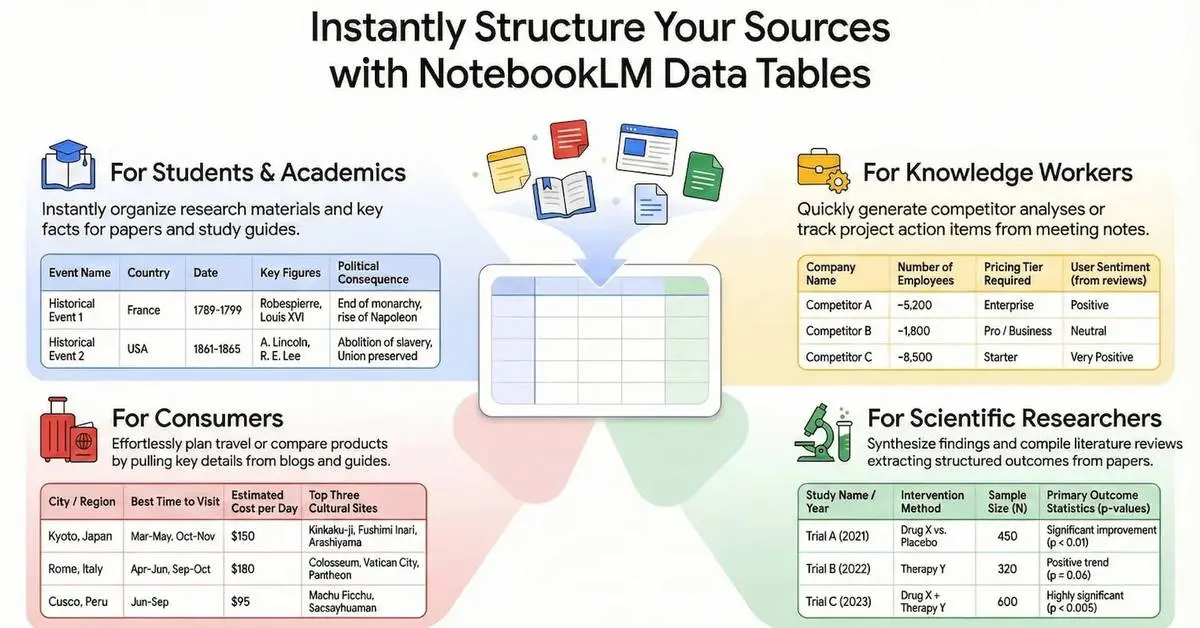AI Stocks: The Next Dot-Com Bubble or a Sustainable Revolution?
4 Sources
4 Sources
[1]
The Stock Market Crashed After the Dot-Com Bubble. Will Artificial Intelligence (AI) Stocks Cause a Similar Market Crash?
The S&P 500 (SNPINDEX: ^GSPC) is commonly regarded as the best barometer for the entire U.S. stock market. The index has advanced 45% since January 2023, due in large part to enthusiasm about artificial intelligence (AI) stocks. Indeed, the five largest AI stocks delivered incredible returns during that period, as detailed below: The gains in AI stocks have been so substantial that some analysts have drawn comparisons to the dot-com bubble, a period in the late 1990s when rapid price appreciation in internet-based stocks let to absurd valuations across the technology sector. The dot-com bubble collapsed in March 2000, and the S&P 500 declined 49% by October 2002. Could the AI boom cause a similar stock market crash? New technologies tend to follow the Gartner Hype Cycle Consultancy Gartner developed the Hype Cycle to educate clients about a common pattern arising from technological innovations. The framework breaks the lifecycle of new technologies into five distinct phases, as described below. The dot-com bubble followed the Gartner Hype Cycle. The internet was the innovation trigger that led to inflated expectations, which itself led to absurd valuations across the technology sector. When the dot-com bubble burst, the market crashed and many analysts predicted the internet would fail. However, practical use cases like e-commerce and cloud computing began to emerge shortly thereafter, and the internet has since become indispensable to the global economy. Artificial intelligence may follow a similar pattern, but the key word is similar. There is no guarantee the generative AI boom will trigger a stock market collapse that rivals the dot-com crash. In 2023, Gartner estimated generative AI was nearing the peak of inflated expectations, and would reach the plateau of productivity within two to five years. If that timeline is accurate, AI stocks will probably lose momentum and suffer a drawdown during the next few years. But current valuations suggest the drawdown will be less severe than the dot-com crash. Stock market valuations were more alarming prior to the dot-com crash Many stocks are historically expensive today. The S&P 500 currently trades at 21.2 times forward earnings, a premium to the five-year average of 19.3 times forward earnings and the 10-year average of 17.9 times forward earnings, according to FactSet Research. But the S&P 500 commanded an even higher valuation of 25 times forward earnings around 2000. Some investors are concerned about technology stocks in particular, but the discrepancy is even more pronounced within that sector. Specifically, technology stocks in the S&P 500 collectively trade at 29.7 times forward earnings today, but they traded above 55 times forward earnings in 2000, according to Yardeni Research. Some investors are also concerned about market concentration, but the discrepancy persists among the megacap companies. In 2000, the five largest dot-com stocks -- Microsoft, Cisco, Intel, Lucent, and IBM -- traded at an average of 59 times forward earnings, adjusted for their relative sizes. Today, the five largest AI stocks -- Microsoft, Nvidia, Alphabet, Amazon, and Meta Platforms -- trade at an average of 49 times forward earnings. Stephanie Aliaga, strategist at JPMorgan Chase, highlighted another key difference in a recent blog post. "During the dot-com bubble, rampant speculation surrounded young companies flaunting internet excitement before profitability. In contrast, today's AI beneficiaries are already very profitable companies that make their money selling key infrastructure and resources to the rapidly growing market of AI adopters." A stock market downturn is coming, but it will probably be less severe than the dot-com crash Investors should prepare themselves for a stock market downturn, and AI stocks will probably be the flash point. That downturn may start next week, next year, or several years from now. But history makes it clear that market corrections and bear markets are unavoidable. However, there is good news. First, valuations are more reasonable today than they were during the dot-com bubble, so the next downturn will probably be less severe than the dot-com crash. Second, investors that buy AI stocks today could still make plenty of money even if those stocks decline sharply in the future. Amazon shares peaked in December 1999, then declined 90% when the dot-com bubble burst. However, the stock has still returned 3,310% since reaching a record high in December 1999, while the S&P 500 has returned just 523%. Put differently, investors that bought Amazon stock on the worst possible day during the dot-com bubble have still crushed the market over the last quarter-century. The Motley Fool Stock Advisor analyst team just identified what they believe are the 10 best stocks for investors to buy now... and S&P 500 Index wasn't one of them. The 10 stocks that made the cut could produce monster returns in the coming years. Consider when Nvidia made this list on April 15, 2005... if you invested $1,000 at the time of our recommendation, you'd have $757,001!* Stock Advisor provides investors with an easy-to-follow blueprint for success, including guidance on building a portfolio, regular updates from analysts, and two new stock picks each month. The Stock Advisor service has more than quadrupled the return of S&P 500 since 2002*. Randi Zuckerberg, a former director of market development and spokeswoman for Facebook and sister to Meta Platforms CEO Mark Zuckerberg, is a member of The Motley Fool's board of directors. Suzanne Frey, an executive at Alphabet, is a member of The Motley Fool's board of directors. JPMorgan Chase is an advertising partner of The Ascent, a Motley Fool company. John Mackey, former CEO of Whole Foods Market, an Amazon subsidiary, is a member of The Motley Fool's board of directors. Trevor Jennewine has positions in Amazon and Nvidia. The Motley Fool has positions in and recommends Alphabet, Amazon, Cisco Systems, JPMorgan Chase, Meta Platforms, Microsoft, and Nvidia. The Motley Fool recommends Gartner, Intel, and International Business Machines and recommends the following options: long January 2025 $45 calls on Intel, long January 2026 $395 calls on Microsoft, short August 2024 $35 calls on Intel, and short January 2026 $405 calls on Microsoft. The Motley Fool has a disclosure policy. The views and opinions expressed herein are the views and opinions of the author and do not necessarily reflect those of Nasdaq, Inc.
[2]
The Stock Market Crashed After the Dot-Com Bubble. Will Artificial Intelligence (AI) Stocks Cause a Similar Market Crash? | The Motley Fool
The stock market is overvalued by historical standards, but not to same degree as it was during the dot-com bubble. The S&P 500 (^GSPC -0.16%) is commonly regarded as the best barometer for the entire U.S. stock market. The index has advanced 45% since January 2023, due in large part to enthusiasm about artificial intelligence (AI) stocks. Indeed, the five largest AI stocks delivered incredible returns during that period, as detailed below: The gains in AI stocks have been so substantial that some analysts have drawn comparisons to the dot-com bubble, a period in the late 1990s when rapid price appreciation in internet-based stocks let to absurd valuations across the technology sector. The dot-com bubble collapsed in March 2000, and the S&P 500 declined 49% by October 2002. Could the AI boom cause a similar stock market crash? Consultancy Gartner developed the Hype Cycle to educate clients about a common pattern arising from technological innovations. The framework breaks the lifecycle of new technologies into five distinct phases, as described below. The dot-com bubble followed the Gartner Hype Cycle. The internet was the innovation trigger that led to inflated expectations, which itself led to absurd valuations across the technology sector. When the dot-com bubble burst, the market crashed and many analysts predicted the internet would fail. However, practical use cases like e-commerce and cloud computing began to emerge shortly thereafter, and the internet has since become indispensable to the global economy. Artificial intelligence may follow a similar pattern, but the key word is similar. There is no guarantee the generative AI boom will trigger a stock market collapse that rivals the dot-com crash. In 2023, Gartner estimated generative AI was nearing the peak of inflated expectations, and would reach the plateau of productivity within two to five years. If that timeline is accurate, AI stocks will probably lose momentum and suffer a drawdown during the next few years. But current valuations suggest the drawdown will be less severe than the dot-com crash. Many stocks are historically expensive today. The S&P 500 currently trades at 21.2 times forward earnings, a premium to the five-year average of 19.3 times forward earnings and the 10-year average of 17.9 times forward earnings, according to FactSet Research. But the S&P 500 commanded an even higher valuation of 25 times forward earnings around 2000. Some investors are concerned about technology stocks in particular, but the discrepancy is even more pronounced within that sector. Specifically, technology stocks in the S&P 500 collectively trade at 29.7 times forward earnings today, but they traded above 55 times forward earnings in 2000, according to Yardeni Research. Some investors are also concerned about market concentration, but the discrepancy persists among the megacap companies. In 2000, the five largest dot-com stocks -- Microsoft, Cisco, Intel, Lucent, and IBM -- traded at an average of 59 times forward earnings, adjusted for their relative sizes. Today, the five largest AI stocks -- Microsoft, Nvidia, Alphabet, Amazon, and Meta Platforms -- trade at an average of 49 times forward earnings. Stephanie Aliaga, strategist at JPMorgan Chase, highlighted another key difference in a recent blog post. "During the dot-com bubble, rampant speculation surrounded young companies flaunting internet excitement before profitability. In contrast, today's AI beneficiaries are already very profitable companies that make their money selling key infrastructure and resources to the rapidly growing market of AI adopters." Investors should prepare themselves for a stock market downturn, and AI stocks will probably be the flash point. That downturn may start next week, next year, or several years from now. But history makes it clear that market corrections and bear markets are unavoidable. However, there is good news. First, valuations are more reasonable today than they were during the dot-com bubble, so the next downturn will probably be less severe than the dot-com crash. Second, investors that buy AI stocks today could still make plenty of money even if those stocks decline sharply in the future. Amazon shares peaked in December 1999, then declined 90% when the dot-com bubble burst. However, the stock has still returned 3,310% since reaching a record high in December 1999, while the S&P 500 has returned just 523%. Put differently, investors that bought Amazon stock on the worst possible day during the dot-com bubble have still crushed the market over the last quarter-century.
[3]
Is AI a Trillion Dollar Bubble: A Dot-Com Deja Vu?
The artificial intelligence (AI) sector, a part of the technology sector, is experiencing a surge of enthusiasm and investment, leading many analysts to question if a bubble is forming. The rapid rise of generative AI, with its potential to transform industries and daily life, has ignited a frenzy of excitement and fueled aggressive spending by tech giants. While the promise of AI is undeniable, concerns about the potential for a bubble are mounting, echoing the dot-com boom and bust of the late 1990s. The Rise of Generative AI: Promises and Disappointments Generative AI is the technology capable of creating new forms of content. This revolutionary technology has captivated the tech world with its ability to produce text, images, and even computer source code. The initial excitement centered on the potential of generative AI to revolutionize industries like healthcare, transportation, education, and marketing. With the ability to automate tasks, generate personalized experiences, and create new forms of content, generative AI holds immense promise for improving efficiency and driving innovation. However, despite these promises, the widespread adoption of generative AI has been slower than expected. The emergence of negative consequences, like deepfakes and disinformation, has raised concerns about the potential misuse of the technology. The proliferation of spam and plagiarism has further dampened the enthusiasm, raising questions about generative AI's responsible use and governance. While popular tools like ChatGPT have gained widespread attention, the broader adoption of generative AI across industries still needs to grow. The Gap Between AI Spending and Returns Tech giants like Microsoft (NASDAQ: MSFT), Alphabet (NASDAQ: GOOG), Meta (NASDAQ: META), and Amazon (NASDAQ: AMZN) are pouring billions into AI infrastructure, leading to a significant gap between their spending and their ability to generate demonstrable returns. This aggressive investment has taken the form of massive capital expenditures (CAPEX), including constructing data centers, developing specialized AI chips, and acquiring AI talent. For example, Microsoft's CAPEX surged 79% year-over-year, reaching a record $14 billion. Alphabet's spending shot up 91% year-on-year and reached $12 billion in Q1 2024, while Meta allocated $7 billion in the first quarter of 2024 to AI and expects further growth to $40 billion in 2024. Despite reporting $14.9 billion in CAPEX for the first quarter, Amazon has indicated that this will likely be the lowest quarterly expenditure for the year. The staggering numbers underscore the substantial financial investments tech companies are making in AI development, indicating a rapidly approaching milestone of $1 trillion devoted to this field. However, despite this enormous investment, the revenue generated by AI products and services has not kept pace. Critics point to the lack of demonstrable returns, suggesting that the spending may be outpacing the actual value being created. Eighteen months after the launch of ChatGPT and the beginning of the "AI Revolution," the industry is still struggling to develop genuinely transformative and commercially viable AI applications that deliver real value to users. Experts' Concerns and the Echoes of the Dot-Com Bubble Concerns regarding the significant disparity between AI spending and returns have emerged among numerous analysts and scholars. The growing gap has prompted comparisons to the dot-com bubble of the late 1990s. Similar to the dot-com bubble, the current AI hype cycle has led investors to experience: The dot-com bubble ultimately burst, leaving a trail of bankrupt companies and shattered investor confidence. However, the companies that survived and adapted, like Amazon and Google, became industry giants. The dot-com era ushered in a period of rapid innovation and technological advancement that ultimately transformed the internet and society. With its high valuations, aggressive spending, and limited returns, the current AI landscape echoes the dot-com boom. Many experts are sounding the alarm, warning of a potential bubble in the AI space. These concerns are further amplified by a need for clearer, commercially viable AI applications delivering real user value. While some experts remain optimistic about the long-term potential of AI, the current situation demands a cautious approach. Expert Concerns about the Current AI Landscape Experts are raising concerns about the present state of Artificial Intelligence (AI), particularly its ability to fulfill its market potential. An MIT study casts doubt on the projected productivity gains from AI, forecasting a modest 5% increase in human productivity and less than 1% growth in GDP over the next decade. The study also indicates that replacing human workers with AI robots is financially unfeasible in most industries for at least the next five years. The study suggests a belief that current AI models can achieve incremental improvements but cannot deliver a revolutionary leap forward. Analysts at Goldman Sachs (NYSE: GS) have also expressed concern about AI's cost-effectiveness, noting that the technology is exceptionally expensive. To justify these costs, AI needs to solve complex problems, which researchers argue it is not yet designed to do. Barclay's (NYSE: BCS) analysts share similar concerns, highlighting that the financial projections for AI investment do not align. While analysts anticipate over $600 billion in additional capital expenditure (CAPEX) on AI development this year, leading to a cumulative CAPEX of over $1 trillion, the projected return in cloud revenue falls short of expectations, amounting to only one-third of that figure. The Case for Long-Term Optimism Despite the concerns, many experts remain optimistic about AI's long-term potential. They argue that the technology will eventually lead to increased productivity, reduced costs, and the creation of new industries and opportunities. The dot-com bubble, while disruptive, ultimately led to a period of rapid innovation and technological advancement. The analogy to the dot-com bubble further underscores this optimism. Although many dot-com companies failed, the survivors, those who adapted and built sustainable business models, became industry giants. The same pattern could emerge in the AI space, with the survivors of the current bubble becoming the industry's future leaders. The AI sector is in constant flux, with significant potential and real risks. While the current spending and hype surrounding AI may bear similarities to the dot-com bubble, the ultimate outcome remains uncertain. Investors need to be cautious and prioritize companies with solid fundamentals and a proven ability to generate revenue from their AI investments. The future of AI is ultimately tied to its ability to deliver real value to users, address societal concerns, and create sustainable business models. With its transformative potential and unpredictable trajectory, the burgeoning field of artificial intelligence offers both opportunities and risks for investors. Navigating this landscape necessitates a deliberate and well-thought-out approach to market engagement and investment strategies. The views and opinions expressed herein are the views and opinions of the author and do not necessarily reflect those of Nasdaq, Inc.
[4]
AI Profits Start To Flow In
Major tech companies like Alphabet, Microsoft, and Amazon heavily investing in A.I. for future growth and profits and have been waiting for evidence the investments are paying off. "Alphabet Reports 29% Jump in Profit as A.I. Efforts Begin to Pay Off." This is major news. Up to now, the information that has been coming out from major firms has been anticipatory. We have gotten information about how the industry is spending on capital expenditures for A.I., but we have not seen much, if anything, about how these efforts are turning out. We have seen information like this included in the earnings report of Alphabet: In the second quarter of 2024, capital expenditures came in at $13.2 billion, "surging" 91 percent from $6.9 billion for the second quarter of 2023. And, we have heard over and over again that A.I. requires scale. This, as I have reported many times, is why the major tech companies have moved dramatically into this space. The small companies just cannot work at the scale needed for generating the A.I. results necessary. So, Alphabet...and Microsoft...and Amazon...and the other large players are getting into the game in a big way. But, we have not heard about how these investments are paying off. Until this quarter, the returns have not shown up. Now, however, Alphabet is boosting that the returns are starting to show up, although Alphabet does not give us a lot of information about the performance. But, it is the only information we have. The expectation is that the reset of the industry will follow Alphabet...investors will not be disappointed. Alphabet increased its investment in capital expenditures in the field by almost 100 percent from the second quarter of 2023 to the second quarter of 2024. The other major players in this space are doing the same thing. The academic world is also building its A.I. foundational enterprises. For example, I just reported the effort by Fei-Fei Li at Stanford University, who started up a new, billion-dollar venture a few months ago. And, there are many other efforts to push the industry forward. The publicity surrounding these efforts is increasing to add to what is going on in the business world. Furthermore, seeing that the investment in A.I. is starting to pay off just reinforces the claim that the U.S. economy is becoming one whose foundation is now based upon almost continuous innovation. Investment in A.I. must keep happening because the competition that has arisen does not stop working on the "next" thing. Hence, there needs to be a continuous flow of money going into the A.I. world and there must be a continuous flow of intellectual resources going into the A.I. world. This picture has not yet been built into the current economic analysis of the economy. This is the "new" age...the age of sustainable economic growth. The management teams of these "high-tech" corporations are not looking for business cycles now. And, this is spreading throughout the economy. Innovation, we are now seeing, cannot stop. If a company stops...or, slows down...its innovative efforts, it falls behind. And, in today's world, falling behind can be disastrous. Falling behind makes it harder and harder, in today's technological world, to catch up. Management's must put the idea of a business cycle behind them. Innovation and creation must go on...and on...and on. Businesses must have access to the financial resources to be able to do this. So, financial planning is crucial, and building up cash resources is mandatory. And, this is why the investment community must keep on top of what is happening and how it is happening. What is not known right now is how the A.I. space is going to evolve. Questions about regulation are following the success of the industry. Mark Zuckerberg is even reaching out to make his views on the regulation of A.I. known. A lot remains to be done, as this sector can be considered to be only in its early stages of development. There is more and more evidence that the A.I. world is succeeding...and expanding...and taking on more and more of the world. Hence, it will continue to draw in intellectual capital...it will continue to draw in money...and, it will continue to scale up.
Share
Share
Copy Link
As artificial intelligence stocks soar, investors and analysts draw parallels to the dot-com bubble. This story explores the potential risks and opportunities in the AI market, comparing current trends to the tech boom of the late 1990s.

The Rise of AI Stocks and Dot-Com Parallels
The artificial intelligence (AI) sector has been experiencing a remarkable surge in recent months, drawing both excitement and concern from investors and market analysts. Many are drawing parallels between the current AI boom and the dot-com bubble of the late 1990s, raising questions about the sustainability of AI stock valuations and the potential for a market crash
1
.Historical Context: The Dot-Com Bubble
The dot-com bubble, which peaked in March 2000, saw internet-related stocks soar to unprecedented heights before crashing spectacularly. This period was characterized by excessive speculation, overvaluation of tech companies, and a disconnect between stock prices and fundamental business metrics
2
.AI Market: Boom or Bubble?
The AI market has shown similarities to the dot-com era, with companies like Nvidia seeing their stock prices skyrocket. The global AI market is projected to reach $1.8 trillion by 2030, fueling investor enthusiasm
3
. However, concerns persist about whether these valuations are justified or if they represent a speculative bubble.Key Differences from the Dot-Com Era
Unlike many dot-com companies, today's AI leaders are often established tech giants with substantial revenues and profits. Companies like Microsoft, Google, and Amazon are investing heavily in AI, integrating it into existing products and services
4
.Potential Risks and Volatility
Despite the promising outlook, the AI sector faces risks. These include regulatory challenges, potential overvaluation of certain stocks, and the possibility of a market correction. Investors are advised to approach AI investments with caution and conduct thorough due diligence
1
.Related Stories
Real-World Applications and Profitability
Unlike many dot-com companies, AI technologies are already being applied across various industries, from healthcare to finance. Some companies are beginning to see tangible profits from their AI investments, suggesting a more solid foundation than the speculative nature of many dot-com era businesses
4
.Investor Strategies in the AI Era
Given the potential volatility, financial experts recommend diversification and a focus on companies with strong fundamentals. Long-term investors may benefit from exposure to AI through established tech companies or diversified ETFs, rather than speculating on unproven startups
2
.The Road Ahead for AI Investments
While the AI sector shows immense promise, investors and analysts remain divided on its long-term trajectory. Some see it as the next major technological revolution, while others warn of a potential bubble. As the market evolves, careful analysis and measured optimism may be the key to navigating the exciting yet uncertain world of AI investments
3
.References
Summarized by
Navi
[4]
Related Stories
Recent Highlights
1
Google launches Gemini 3 Flash as default AI model, delivering speed with Pro-grade reasoning
Technology

2
OpenAI launches GPT Image 1.5 as AI image generator war with Google intensifies
Technology

3
OpenAI launches ChatGPT app store, opening doors for third-party developers to build AI-powered apps
Technology








